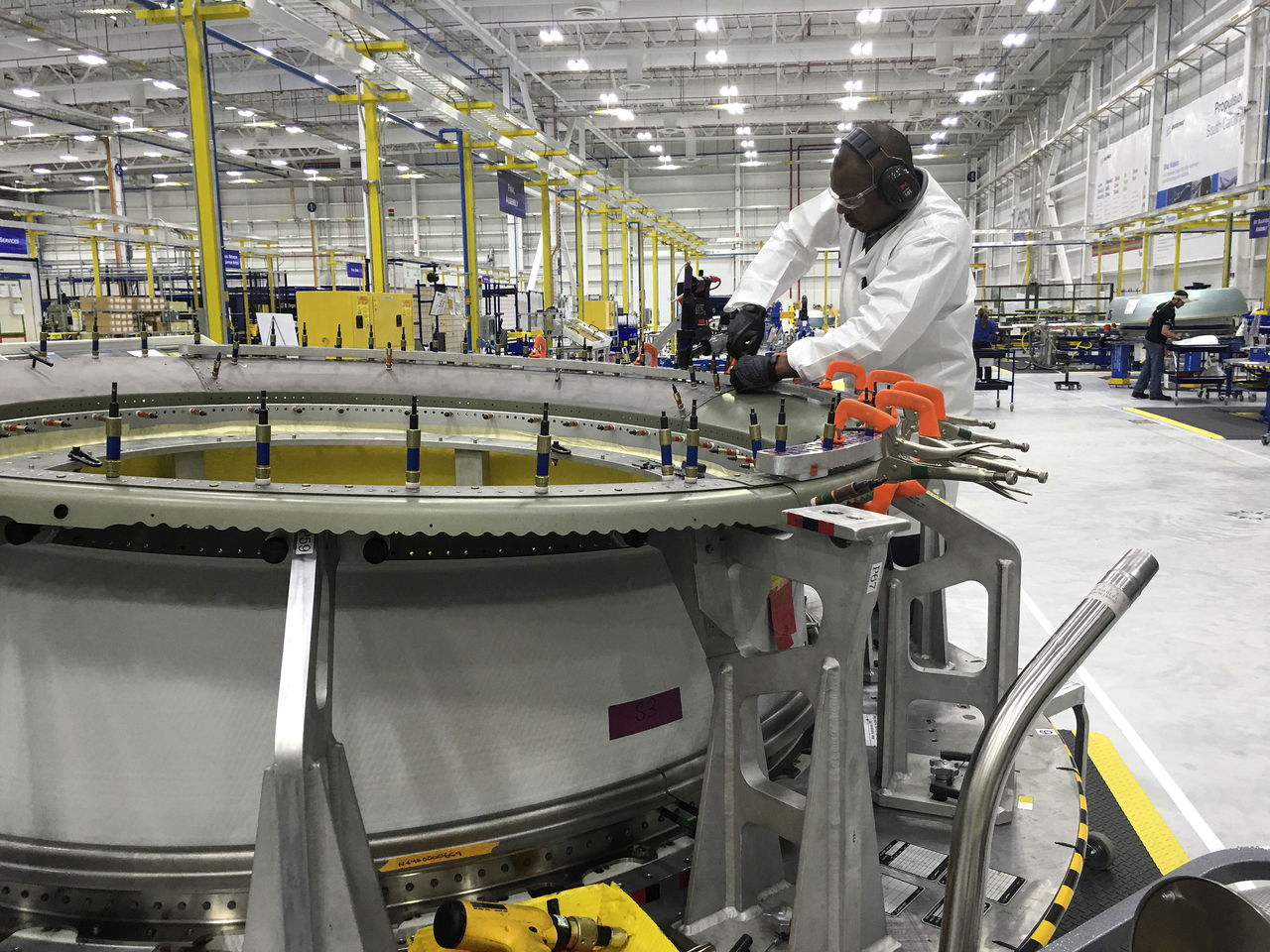LADSON, S.C. — In a rural area just outside North Charleston, a few hundred Boeing engineers are finding new ways to automate production, inspection and testing to squeeze time, labor and other costs out of commercial airplane assembly.
Engineers and technical workers at Boeing Research &Technology, or BR&T, here are developing robots to improve efficiency — a faster way, for example, to inspect the quality of composite-material components as they are delivered to the assembly line.
“It’s an enabler for Boeing going to higher rates” of production for the 787 Dreamliner, said Keith Young, director of composites technology at BR&T in South Carolina. Boeing builds the 787 in Everett and in North Charleston.
The robot used in that inspection process is made by KUKA, as were most of the robots inside the BR&T building. KUKA is a German company whose aerospace division is working with Boeing to significantly automate how it assembles the 777 and its successor, the 777X, in Everett.
BR&T Materials and Manufacturing Technology, as the group here is called, is focused on fuselage production, assembly and testing. It has three priorities: automate painting and sanding; make components out of composite material; and automate assembly.
The company this week showed journalists its assembly line in North Charleston as it delivered the 100th 787 built at the factory, which employs some 7,500. But that isn’t the only work Boeing has brought to South Carolina in recent years.
There are about 400 workers with BR&T South Carolina, with about 250 at the Ladson building. Most are technical workers or engineers. The group is roughly evenly split between workers who transferred from other Boeing sites, veteran workers hired by Boeing to work here and people new to the aerospace industry. Most of the last group joined Boeing soon after finishing college.
About 10 percent of the workers here moved from metro Puget Sound, Young said.
The group here is one of five engineering “centers of excellence” around the U.S., part of a restructuring of BR&T that has resulted in jobs leaving metro Puget Sound. Boeing officials have said that setting up the centers was strictly a business decision intended to stay competitive.
Restructuring BR&T coincided with other work moves that resulted in more than 4,000 Boeing engineering jobs leaving Washington for other states and even overseas. Critics called the moves an anti-union effort meant to weaken the Society of Professional Engineering Employees in Aerospace, or SPEEA, which represents more than 20,000 engineers and other white-collar workers at Boeing.
Driving down cost is critical for Boeing now. The company has committed to spending billions of dollars in the next few years on bringing new airplanes into production and buying back stock from shareholders.
At the same time, Boeing’s biggest revenue generators — the Everett-built 777 classic and the Renton-built 737 — face significant pricing pressure. Company executives have acknowledged as much but have declined to say just how far down jetliner prices are being pushed.
Dan Catchpole: 425-339-3454; dcatchpole@heraldnet.com.
Talk to us
> Give us your news tips.
> Send us a letter to the editor.
> More Herald contact information.

























